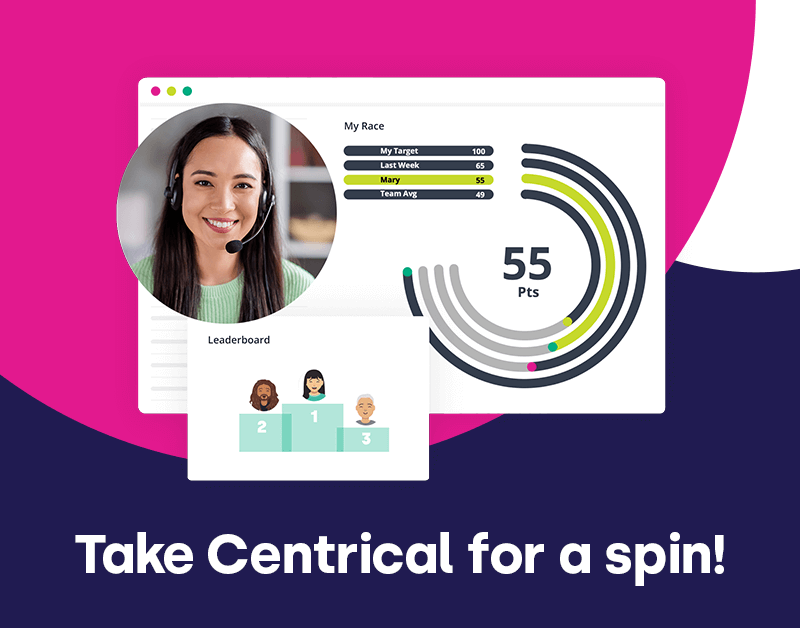Attrition by the Numbers
We all know that attrition is common and expensive. According to McKinsey, the estimated cost of attrition is as follows:
- $4,000 to $7,000 for upfront training
- $1,000 to $4,000 in direct recruiting costs
- $5,000-$10,000 in loss of productivity during ramp-up
This is costly on its own. But when you factor in that BPOs and contact centers have an attrition rate of approximately 50-60% per year, it’s clear just how much. (For perspective, on average, most industries can expect approximately 18% turnover per year.) Things are even bleaker in the travel and hospitality industry as a whole – according to the Bureau of Labor Statistics (BLS) Job Openings and Labor Turnover Report (JOLTS), the hospitality industry has the highest turnover rates of any sector. Recent figures show that in 2021, the accommodation and food services industry had a turnover rate of 86.3%. While that may be down on the 2020 pandemic-induced high of 130%, it’s still significantly more than the national average of 47.2%.
To say that attrition is costly is an understatement. But it is also preventable.
Attrition Danger Zones
The first step to preventing early attrition is to understand why employees leave early (or never show up at all). And to gain that understanding, it is important to have a quick glimpse into the early part of the employee lifecycle – pre-boarding and onboarding.
Danger Zone: The First 90 Days
At this point, the new hire’s administrative and payroll paperwork is done, and they are officially part of the team. But the first 90 days present a risk for early attrition One reason is job shock. Job shock occurs when someone starts a new job, but the role and the associated requirements aren’t quite as expected. The new hire might not have been fully cognizant of the nature of their role and responsibilities, the workload, or perhaps organizational policies. If unaddressed, that new hire will leave.
Another top reason for early attrition is a lack of guidance. A new employee may understand the company mission and the expectations around their role but will still need guidance around their day-to-day work, as well as performance evaluation and best practices. Without guidance, new hires might not receive the information or feedback they need to feel successful early on and can get discouraged and leave.
As we discussed earlier, this all comes at a cost. Early attrition has two major impacts:
The company’s bottom line. When there is a revolving door of new hires, it is difficult to get them to production. In addition to spending more on recruitment and training costs the investment in new hires that leave before becoming fully productive is sunk costs.
The customer experience. Attrition causes a labor and knowledge gap. And, when new hires who should fill the gap never show up or leave before they are brought to proficiency, other employees must pick up the slack. This can mean longer wait times with a reservation agent or perhaps a longer queue at a hotel’s front desk. Either way, the customer experience suffers, and the brand risks a shift in customer loyalty.
All of these points come back to staying connected during the pre-boarding downtime and the employees’ first days on the job. This doesn’t have to be difficult or expensive. In fact, any associated costs will likely be minuscule compared to the cost of having to repeat the recruitment process.
In the next section, we’ll share four core strategies around pre-boarding and onboarding, and follow that with a few simple ideas for keeping new hires connected while setting them up for long-term success.
The Core Four: Staying Connected for Pre-Boarding and Onboarding
You’re familiar with performance management and its practices. But these practices are rapidly becoming outdated. Why? A new generation of frontline employees is shifting the paradigm. They don’t want archaic, legacy technology as part of their workflow, and expect a personalized, guided employee experience. They want ownership of their work, autonomy, and a clear career path. With modern workers comes the need for a modern approach – and that is where the Performance Experience Methodology comes in.
The Performance Experience Methodology consists of four strategies that can be applied to each stage of the employee lifecycle, shown in the figure below:
Slide 6 in PXM deck/Guide for the copy
Applied to pre-boarding and onboarding, this approach has a proven and tremendously positive impact on employee retention, engagement, and performance – and ultimately, the customer experience. In the next section, we’ll share a few ideas that reflect how the methodology can help keep your newly hired travel and hospitality employees connected and excited about their new role.
While we will largely focus on pre-boarding going forward, it is important to note that the pre-boarding experience will heavily shape the employee’s first 90 days on the job, very likely determining if they stay on or voluntarily leave.
Engage and motivate your frontline teams
Improve performance with an AI-powered digital coach
Deliver world class CX with dynamic, actionable quality evaluations
Boost performance with personalized, actionable goals
Nurture employee success with the power of AI
Listen and respond to your frontline, continuously
Drive productivity with performance-driven learning that sticks
Drive agent efficiency, deliver client results
Keep tech teams motivated and proficient on products and services while exceeding targets
Maintain compliance while building customer happiness and loyalty
Enlighten energy teams to boost engagement
Engage, develop, and retain your agents while driving better CX
Improve the employee experience for your reservations and service desk agents














 Madeleine Freind
Madeleine Freind
 Natalie Roth
Natalie Roth Linat Mart
Linat Mart












 Doron Neumann
Doron Neumann Gal Rimon
Gal Rimon Daphne Saragosti
Daphne Saragosti Ella Davidson
Ella Davidson Ariel Herman
Ariel Herman Ronen Botzer
Ronen Botzer